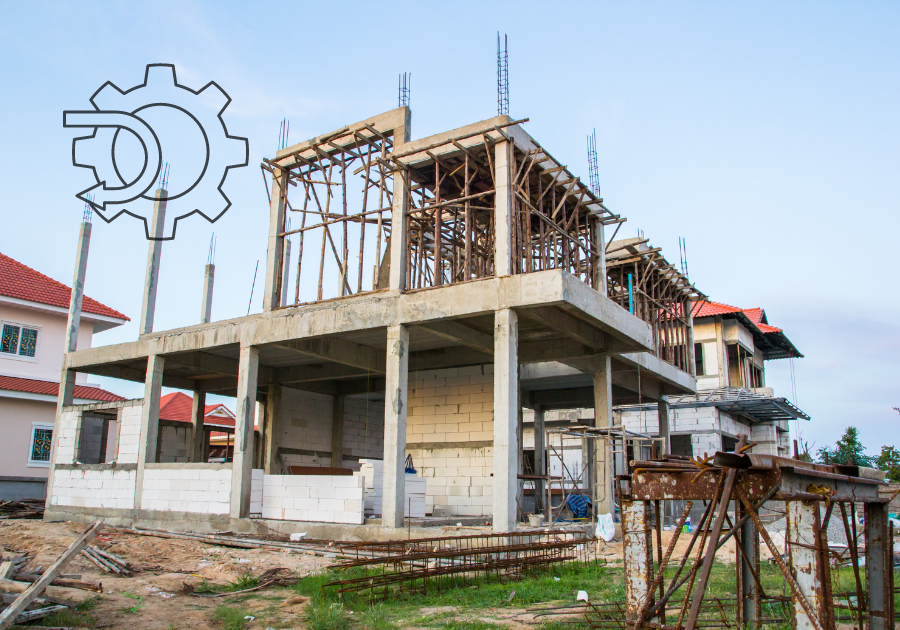Bypassing Construction Delays & Project Management Strategies

Complete site development is a complex process that involves dozens of different workers all performing unique, critical functions. Each area of the site is like a piece in a machine, and construction cannot continue until each piece of the project is complete.
Everything from sewage to concrete laying must be done in conjunction and completed on schedule, otherwise delays will occur. When looking at the project scope, project managers must be mindful of potential delays and prepare proactive approaches so that the entire project isn't derailed.
In this post, we will detail some effective project management strategies for construction sites to help you keep your productions on schedule and keep your workers productive. Keep reading to learn more!

Construction Project Management Strategies
There are several different ways to manage your construction projects to prevent lengthy delays and worker confusion. It is important that all project managers are on the same page about your on-site strategy and know the potential risks involved.
Below we have detailed a few strategies that are designed to help construction companies circumnavigate construction delays and keep on schedule.
Lean Construction Principles
Lean Construction principles are a set of guidelines that aim to increase efficiency and reduce waste in the construction industry. Two essential principles of Lean Construction are Just-in-Time Delivery and Continuous Improvement.
Just-in-Time Delivery revolves around scheduling material deliveries to arrive exactly when they are needed on-site. This not only saves space but also reduces the risk of damage or theft. Additionally, it prevents the need for excessive handling and transportation of materials, saving time and labor costs. Just-in-Time Delivery is a critical aspect of Lean Construction as it optimizes the flow of materials, streamlining the construction process.
Continuous Improvement is another crucial principle that involves the regular review of construction processes to identify areas that can be improved. By consistently analyzing and implementing enhancements, construction companies can enhance efficiency and reduce waste. Regular evaluations allow for the identification of unnecessary steps, bottlenecks, or redundancies, which can then be eliminated or modified. Continuous Improvement promotes a culture of ongoing learning and innovation within the construction industry.
Detailed Planning and Scheduling
Detailed planning and scheduling are crucial steps in project management that help ensure the successful completion of a project. These steps involve breaking down the project into smaller, manageable tasks, identifying the critical path, and creating Gantt charts to visualize the project timeline.
The first step in detailed planning and scheduling is to create a Work Breakdown Structure (WBS). The WBS involves breaking down the project into smaller tasks or activities. This helps to ensure that all aspects of the project are accounted for and can be effectively managed. Each task is then assigned to a project lead and is further broken down into subtasks if necessary. This breakdown allows for better management and allocation of resources.
The next step is to identify the critical path using the Critical Path Method (CPM). The critical path is the longest stretch of dependent activities, meaning that any delay in these activities will result in a delay in the overall project completion. By identifying the critical path, project managers can focus their resources and efforts on these tasks to ensure they are completed on time.
Finally, create Gantt charts to visualize the project timeline and track progress. Gantt charts provide a visual representation of the project schedule, showing the start and end dates of each task and the dependencies between tasks. This allows project managers to easily identify any potential delays or bottlenecks in the project and adjust as necessary.
Effective Change Management
Effective change management is crucial for any project's success. It is essential to establish a formal change control process to manage changes to the project scope, schedule, and budget. This process ensures that all changes are thoroughly analyzed and approved before implementation.
The first step is to conduct an impact analysis. This involves assessing the potential effects of the proposed changes on the project timeline and cost. By conducting this analysis before implementation, the project team can identify any potential risks or challenges that may arise as a result of the change. This allows for informed decision-making and enables the team to determine if the change is feasible within the project's constraints.
The impact analysis also helps in identifying any necessary adjustments that need to be made to the project plan to accommodate the change. It allows for accurate forecasting of the impact on project resources, deadlines, and budget. By understanding the consequences of the change, project managers can effectively communicate with stakeholders and manage expectations.
Better Project Management with Charles H. Hamilton Company Construction
Superior project management starts from the top down. Project managers must familiarize themselves with potential issues and factor delays into their project budget and timeline. Project success hinges on a team of construction workers collaborating and combining their skills while overcoming potential challenges for peak project efficiency.
At Charles H. Hamilton, we understand the importance of an efficient team and the damage poor planning can cause. If you are looking for a construction team that can avoid costly delays, effectively hit project goals, and proactively manage a large construction campaign throughout a project lifecycle, then Charles H. Hamilton is the team for you!
Click here to start a discussion with our team regarding your project needs today!

